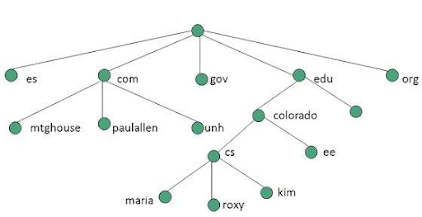what is World wide web WWW?
The World Wide Web (WWW) is a network of online content that is formatted in HTML and accessed via HTTP. The term refers to all the interlinked HTML pages that can be accessed over the Internet. The World Wide Web was originally designed in 1991 by Tim Berners-Lee while he was a contractor at CERN.
The World Wide Web is what most people think of as the Internet. It is all the Web pages, pictures, videos and other online content that can be accessed via a Web browser. The Internet, in contrast, is the underlying network connection that allows us to send email and access the World Wide Web.
WWW Architecture
WWW architecture is divided into several layers as shown in the following diagram:
Identifiers and Character Set
Uniform Resource Identifier (URI) is used to uniquely identify resources on the web and UNICODE makes it possible to built web pages that can be read and write in human languages.
Syntax
XML (Extensible Markup Language) helps to define common syntax in semantic web.
Data Interchange
Resource Description Framework (RDF) framework helps in defining core representation of data for web. RDF represents data about resource in graph form.
Taxonomies
RDF Schema (RDFS) allows more standardized description of taxonomies and other ontological constructs.
Ontologies
Web Ontology Language (OWL) offers more constructs over RDFS. It comes in following three versions:
OWL Lite for taxonomies and simple constraints.
OWL DL for full description logic support.
OWL for more syntactic freedom of RDF
Rules
RIF and SWRL offers rules beyond the constructs that are available from RDFs and OWL. Simple Protocol and RDF Query Language (SPARQL) is SQL like language used for querying RDF data and OWL Ontologies.
Proof
All semantic and rules that are executed at layers below Proof and their result will be used to prove deductions.
Cryptography
Cryptography means such as digital signature for verification of the origin of sources is used.
User Interface and Applications
On the top of layer User interface and Applications layer is built for user interaction.
WWW Operation
WWW works on client- server approach. Following steps explains how the web works:
User enters the URL (say, http://www.tutorialspoint.com) of the web page in the address bar of web browser.
Then browser requests the Domain Name Server for the IP address corresponding to www.tutorialspoint.com.
After receiving IP address, browser sends the request for web page to the web server using HTTP protocol which specifies the way the browser and web server communicates.
Then web server receives request using HTTP protocol and checks its search for the requested web page. If found it returns it back to the web browser and close the HTTP connection.
Now the web browser receives the web page, It interprets it and display the contents of web page in web browser’s window.
Future
There had been a rapid development in field of web. It has its impact in almost every area such as education, research, technology, commerce, marketing etc. So the future of web is almost unpredictable.
Apart from huge development in field of WWW, there are also some technical issues that W3 consortium has to cope up with.





Comments
Post a Comment